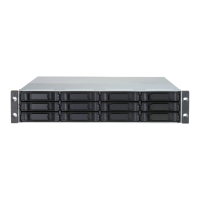245
Chapter 8: Technology Background
This chapter covers the following topics:
• Introduction to RAID (below)
• Choosing a RAID Level (page 256)
• Choosing Stripe Size (page 259)
• Choosing Sector Size (page 259)
• Cache Policy (page 260)
• Capacity Coercion (page 262)
• Initialization (page 262)
• Hot Spare Drive(s) (page 263)
• Partition and Format the Logical Drive (page 263)
• RAID Level Migration (page 264)
• Media Patrol (page 271)
• Predictive Data Migration (PDM) (page 272)
• Transition (page 273)
Introduction to RAID
RAID (Redundant Array of Independent Disks) allows multiple physical drives to
be combined together in a disk array. Then all or a portion of the disk array is
formed into a logical drive. The operating system sees the logical drive as a
single storage device, and treats it as such.
The RAID software and controller manage all of the individual drives. The
benefits of a RAID can include:
• Higher data transfer rates for increased server performance
• Increased overall storage capacity for a single drive designation (such as, C,
D, E, etc.)
• Data redundancy/fault tolerance for ensuring continuous system operation in
the event of a hard drive failure
Different types of logical drives use different organizational models and have
varying benefits. Also see “Choosing a RAID Level” on page 256. The following
outline breaks down the properties for each type of RAID logical drive:

